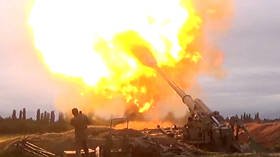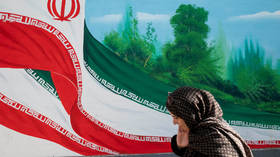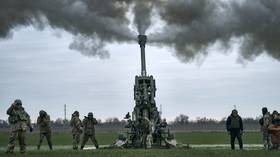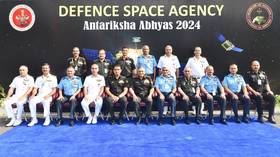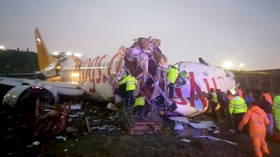Turmoil in Armenia, Azerbaijan, Kyrgyzstan, Belarus, & Ukraine shows that, three decades on, the Soviet Union’s still collapsing
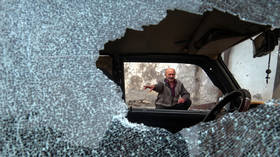
The sudden collapse of the USSR in 1991 created many weak countries without a unifying national identity and a strong central state. Yet conflicts will continue until the world is willing to recognize the realities on the ground.
War between Armenia and Azerbaijan. Violent protests in Kyrgyzstan. Mass demonstrations in Belarus. This month, the countries of the former Soviet Union (FSU) have once again been making headlines. When added to the low-level war in Eastern Ukraine, and the unresolved conflicts in Moldova and Georgia, this recent unrest highlights the ongoing instability of what Russia terms its ‘near abroad’.
One common explanation for this volatility is to blame it on the Russian Federation and its inability to accept its loss of empire. Russia, it is claimed, is inciting trouble in its immediate neighborhood in order to prevent the states of the FSU from transiting towards democracy and integration with Western institutions.
Also on rt.com Urging a ceasefire in Nagorno-Karabakh, Putin confirms Russia will fulfil defense-pact obligations to ArmeniaThere is perhaps an element of truth in this – Russia’s support for the rebels of Donbass is a case in point – but only a small one. The troubles in Azerbaijan, Armenia, Kyrgyzstan, and Belarus owe nothing to Russian interference. Nor is Russia the only outside power involved in its near abroad. Western states have also played an active role in the region, most notably in Ukraine, while Turkey is receiving much of the blame for the fighting between Armenia and Azerbaijan.
Given the involvement of so many outsiders, one could, therefore, see the root of the region’s problems as lying in the fact that it has become a geopolitical battleground. Again, this is only partially true. External actors can exacerbate and prolong internal conflicts, but they don’t create them. The roots of instability lie within the countries of the FSU themselves.
This conclusion leads to another popular explanation, namely that the primary cause of conflict in the developing world is a lack of democracy. This is said to lead to corruption, stagnation, and the dissatisfaction of the masses, which, in due course, leads to political violence.
On the surface, it sounds convincing. Deeper analysis, however, shows that this theory is rather flawed. Kyrgyzstan is the most democratic of the states of Central Asia, while also being the poorest and by far the most politically unstable, having suffered three revolutions in 15 years. Ukraine, meanwhile, has long had far more competitive elections than its neighbors Russia and Belarus, and yet has suffered two revolutions and a civil war. There is no obvious correlation between democracy and stability.
Another lens through which to look at the problem is postcolonialism. The FSU could be seen as suffering from similar problems to former British and French colonies once they gained independence. All too often, the democratic systems left by the colonizers rapidly collapsed in a succession of military coups, revolutions, and insurgencies. Various factors explain this: for instance, artificial borders that did not coincide with ethnic boundaries; weak state institutions; and endemic poverty.
One can see a similar dynamic in the post-Soviet space. The republics that gained independence in 1991/92 in many cases lacked clearly defined and well-established national identities, or contained large ethnic minorities. They also lacked both a tradition of statehood and strong institutions – the primary institution that had previously held them together was the Communist Party, which no longer existed.
All this mattered, and continues to matter, as government legitimacy derives from more than competitive elections. It rests also on a sense that a country’s rulers represent the people, their culture, and their values, as well as on a recognition that they are able to deliver competent government. In the absence of a unifying national identity and a strong central state, legitimacy passes to sub-state entities, and society fractures.
The problem that former Soviet states face is that it takes a very long time to overcome these limitations, and attempts to do so can often backfire, particularly when efforts are made to force a certain national identity on an unwilling population (or at least on a population part of which is unwilling). In such cases, discontented groups take matters into their own hands through secession, revolution, or other political action.
Also on rt.com Azerbaijan & Armenia at war: What you need to know about bloody conflict over long-disputed region of Nagorno-Karabakh (MAP)As if this were not bad enough, the international system is simply not designed to cope with the resulting conflicts. This is particularly true when it comes to separatism and the redrawing of borders. Until at least 1945, wars often ended in the transfer of territory, enshrined in a treaty between the winner and the loser. In the modern era, however, the territorial integrity of states has become a sacrosanct element of the international order. Defeated nations simply refuse to recognize the loss of territory, while other states back them in this refusal.
The result is one of the peculiar characteristics of the post-Soviet era, the so-called frozen conflict, which involves breakaway territories achieving de facto independence, but being unable to gain recognition of this. Consequently, they exist in a long-term limbo in which they can often survive only by means of illicit economic activities. Neither they nor the international community as a whole benefit from the failure to recognize the realities on the ground. But time after time, adherence to the principle of territorial integrity trumps the making of peace.
Of course, no single one of these factors by itself explains the continuing problems faced by post-Soviet states. It is rather the different combinations of various of them in different cases that provides for the variety of conflicts we see today. Unfortunately, this means that easy answers are not to be found.
The statements, views and opinions expressed in this column are solely those of the author and do not necessarily represent those of RT.
If you like this story, share it with a friend!
The statements, views and opinions expressed in this column are solely those of the author and do not necessarily represent those of RT.
